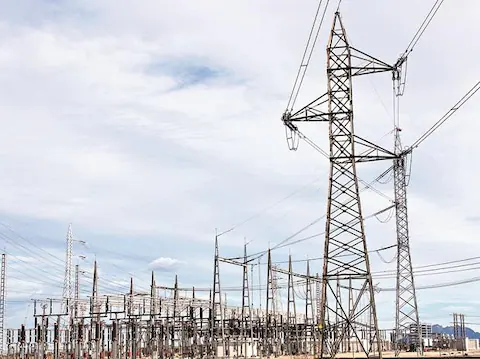Tata Power, despite going through a quick transformation, has reported outstanding growth for 12 straight quarters. However, the company's path to transformation is not without its share of difficulties in these days of Industry 4.0, when there is a noticeable global trend toward renewable energy (RE) sources. Even more so if you are a company with a 107-year history, 68 subsidiaries in India and abroad, 34 joint ventures, and 5 associates throughout the full value chain of power.
"What is important for us is consistent performance... [which] is reflected in the market price and market capitalisation," Praveer Sinha, CEO & Managing Director, tells BT on a busy November afternoon. "We have successfully come out of several challenges and our performance will help us give better returns to shareholders," adds Sinha, even as he regularly checks his phone for any important updates from across the company's gargantuan network.
The Tata Power stock beat the benchmark BSE Sensex during the BT500 period under review (October 2021–September 2022), increasing 36% as opposed to the Sensex's decline of 2.8%. However, volatility has been substantially higher over the examined period, with the 52-week high reaching Rs 298 and the low being Rs 156.60.

credit: businessToday
In terms of securing new solar Engineering, Procurement and Construction (EPC) orders and reducing aggregate technical and commercial (AT&C) losses at the three power utilities during the Covid-19-induced lockdowns, analysts say the company has performed rather well during this time. As part of the corporation's drive into renewable energy, the company also raised financing from a group led by BlackRock Real Assets to the tune of '4,000 crore in two parts by selling a 10.53 percent interest in Tata Power Renewables. "The investment would translate into a base equity valuation of Rs 34,000 crore and an enterprise value of nearly Rs 50,000 crore for a platform that will house all the RE businesses of Tata Power and will meet the equity capex requirement for the firm for [the] next three-four-year period," says Anuj Upadhyay, Institutional Research Analyst at HDFC Securities.
The country's increased use of green energy has benefited Tata Power's expansion and, consequently, its profits. According to Upadhyay, the company has taken advantage of its first-mover advantage to gain a sizeable market share in a number of industry sectors, including solar EPC, solar pumps, solar rooftop installations, and electric vehicle (EV) charging.
However, this growth has also presented some unusual difficulties. One is the delay in solar EPC contract execution brought on by a sharp increase in module pricing, which increased by up to 60% to more than '25 per watt. Additionally, this had a negative impact on its solar EPC division's margins in Q4FY22 and Q1FY23. The aggressive tenders, however, were apparently completed, and all recently bid or planned tenders feature the high module pricing, since the margins were restored during Q2FY23.
Due to a lower Plant Load Factor (PLF) of 25% and an increase in fuel under-recoveries to Rs 1 per unit from Rs 0.16 per unit in Q3FY22, Tata Power's Mundra Ultra Mega Power Plant (MUMPP), which is operated by Coastal Gujarat Power Ltd (CGPL) SPV (special purpose vehicle), reported a loss of Rs 484 crore. According to the firm management, advanced negotiations for supplemental power purchase agreements (PPAs) for fuel cost pass-through are underway with Gujarat and other states. By doing this, Mundra would have less losses and fuel under-recoveries.

credit: businessToday
CGPL began recording sales under Section 11 of the Electricity Act in May of this year. This notification, which has been extended through December 31, calls for the buyer to fully reimburse the Central Electricity Regulatory Commission for the cost of creating the power as well as a specific profit (CERC). Based on an interim rate set by the Ministry of Power, CGPL has been charging customers. "For capacity charges, CERC's recent favourable order helped recognise Rs 460 crore additional revenue during Q2FY23—Rs 150 crore pertaining to Q1FY23. We believe, once CERC approves the tariff, `400-500 crore under-recovery of variable charges may be reversed in the coming quarters, resulting in further increase in profits," says ICICI Securities in its review of Tata Power's second quarter results.
Also Read:
Source





No comments:
Post a Comment